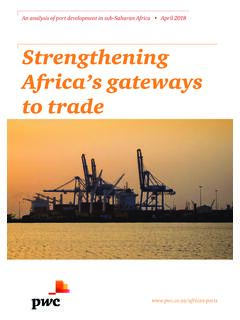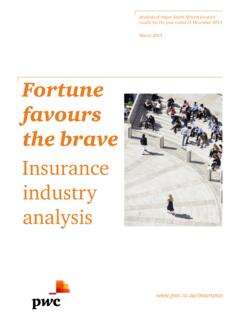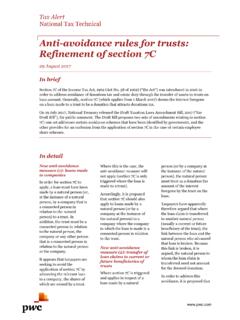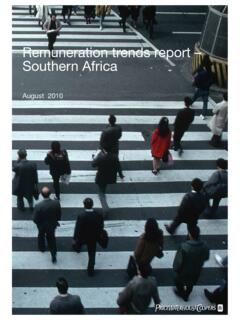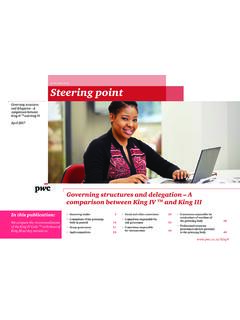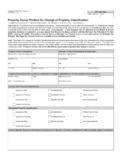Transcription of Simplifying reporting - PwC
1 Private Company Services Providing an overview of the IFRS for SMEs and matters to consider on its implementationMay 2012 Simplifying reporting Moving to SME International Financial reporting Standard for Small and Medium-sized entities (the IFRS for SMEs) was developed by the International Accounting Standards Board (IASB) in recognition of the difficulty and cost to private companies of preparing financial statements that are compliant with full IFRS. The IFRS for SMEs recognises that the users of private entity financial statements may have a focus that is different from that of users of the financial statements of listed or other publicly accountable end of SA GAAPThe Accounting Practices Board (APB) and the Financial reporting Standards Council (FRSC) issued a joint communication during March 2012 reflecting their decision to discontinue the use of SA GAAP.
2 Effective from annual periods commencing on or after 1 December 2012, companies are no longer allowed to apply SA GAAP. Companies currently applying SA GAAP therefore need to consider the financial reporting framework that will be appropriate for them to apply in future - the choice: IFRS or the IFRS for SMEsIn making this choice, entities need to consider matters such as whether they intend listing in the future, whether they form part of a larger group of companies which report under IFRS and what their stakeholders expectations around reporting might be. On the other hand, entities that are seeking a more stable platform which may require a smaller investment in keeping financial staff up to date and which may result in lower costs in preparing financial statements may be more interested in IFRS for SMEs.
3 You may find the section titled Why entities are making the change on page 6 of this publication useful to demonstrate the benefits of applying the IFRS for SME standard, and the section on pages 2-4 showing the key differences between IFRS and IFRS for SMEs, it is useful as a guide to understanding the additional complexity that full IFRS brings. When a company decides to move from SA GAAP to IFRS, the company will need to consider IFRS 1 - First time adoption of IFRS. While there are minimal differences between SA GAAP and IFRS, IFRS 1 requires certain disclosures to be made by the company when converting to IFRS in its first set of IFRS financial statements.
4 In addition, there are decisions to be made by management on the exemptions under IFRS 1 that the company may wish to elect. Companies should consult further with their PwC contact should they wish to move from SA GAAP to IFRS. The rest of this document focuses on moving from SA GAAP to IFRS for SME can apply the IFRS for SMEsIn terms of the Companies Act No. 71 of 2008 ( The Act ), which came into effect on 1 May 2011, the following financial reporting frameworks are permitted to be applied: IFRS IFRS for SMEs SA GAAPAll entities apart from public companies, state-owned companies and certain non-profit companies are allowed to apply the IFRS for SMEs, subject to meeting the scoping requirements of the public accountabilityGeneral purpose financial statements1 Scope of the IFRS for SMEsThe IFRS for SMEs is aimed at entities that.
5 Do not have debt or equity instruments traded in a public market do not hold assets in a fiduciary capacity for a broad group of outsider, and prepare general purpose financial first two bullets relate to entities that have public accountability. IFRSIFRS for SMEsFinancial StatementsA statement of changes in equity is required, presenting a reconciliation of equity items between the beginning and end of the is a similar requirement, with a relief provision which states that if the only changes to equity during the period are as result of profit or loss, payment of dividends, correction of prior-period errors or changes in accounting policy, a combined statement of income and retained earnings can be presented of both a statement of comprehensive income and a statement of changes in combinationsTransaction costs are excluded under IFRS 3 (revised).
6 Contingent consideration is recognised regardless of the probability of costs are included in the acquisition considerations are included as part of the acquisition cost if it is probable that the amount will be paid and its fair value can be measured in associates and joint venturesInvestments in associates are accounted for using the equity cost and fair value model are not permitted except in separate financial account for jointly controlled entities, either the proportionate consolidation method or the equity methods are entity may account for its investments in associates or jointly controlled entities using one of the following: The cost model (cost less accumulated impairment losses) The equity method The fair value through profit or loss modelExpense recognitionResearch costs are costs are capitalised and amortised when specific criteria are costs are capitalised if certain criteria are research and development costs and all borrowing costs are recognised as an instruments derivatives and hedgingIAS 39, Financial Instruments.
7 Recognition and measurement , distinguishes four measurement categories of financial instruments: financial assets at fair value through profit or loss held to maturity investments loans and receivables, and available-for-sale financial are two sections dealing with financial instruments: A section for simple payables and receivables and other basic financial instruments A section for other, more complex financial instruments. Most of the basic financial instruments are measured at amortised cost; the complex instruments are generally measured at fair value through profit or are the key differences between IFRS and the IFRS for SMEsIFRSIFRS for SMEsNon-financial assets and goodwill Tangible and intangible assetFor tangible and intangible assets, there is an accounting policy choice between the cost model and the revaluation and other intangibles with indefinite lives are reviewed for impairment and not cost model is the only permitted intangible assets, including goodwill, are assumed to have finite lives and are amortised.
8 IAS 38, Intangible Assets The useful life of an intangible asset is either finite or indefinite. The latter are not amortised and an annual impairment test is is no distinction between assets with finite or infinite lives. The amortisation approach therefore applies to all intangible assets. These intangibles are tested for impairment only when there is an indication. IAS 40, Investment Property Entities have an accounting policy choice between the fair value and cost property is carried at fair value if this fair value can be measured without undue cost or effort. IFRS 5, Non-current assets held for sale and discontinued operations IFRS 5 requires non-current assets to be classified as held for sale where the carrying amount is recovered principally through a sale transaction rather than through continuing is no separate standard dealing with this.
9 The decision to sell an asset is considered an impairment benefits defined benefit plansActuarial gains or losses can be recognised immediately or amortised into profit or loss over the expected remaining working lives of participating use of an accrued benefit valuation method (the projected unit credit method) is required for calculating defined benefit gains or losses require are recognised immediately and splits the expense into different circumstance-driven approach is applicable, which means that the use of an accrued benefit valuation method (the projected unit credit method) is required if the information that is needed to make such a calculation is already available, or if it can be obtained without undue cost or effort.
10 If not, simplications are permitted in which future salary progression, future service or possible mortality during the employee s period of service are not are the key differences between IFRS and the IFRS for SMEs3 IFRSIFRS for SMEsIncome TaxesA deferred tax asset is only recognised to the extent that it is probable that there will be sufficient future taxable profit to enable recovery of the deferred tax deferred tax is recognised upon the initial recognition of an asset. There is no specific guidance on uncertain tax positions. In practice, management will record the liability measured as either a single best estimate or a weighted average probability of the possible outcomes, if the likelihood is greater than 50%.

